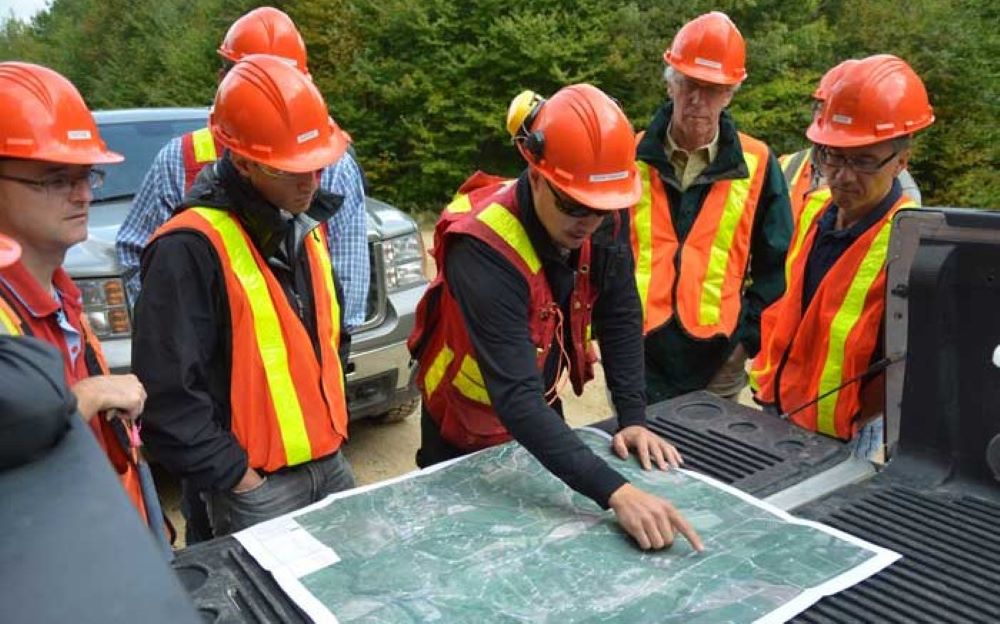Shore Gold to build Saskatchewan’s first diamond mine
The idea of finding diamonds in Saskatchewan was met with scepticism in the 1980s. A Russian geophysicist, Dr. J.G. Strnad, predicted the existence of diamondiferous kimberlites, noting the large geophysical anomalies in the province’s sedimentary basin. Knowledgeable diamond miners thought the anomalies too large to be kimberlites. The targets in Saskatchewan certainly were outside (and outsized) their experience in South Africa.
But Strnad was right. The first kimberlite in the Fort à la Corne area was drilled by De Beers in 1988. The next year a venture of Cameco and Uranerz drilled another. The properties were combined as the Fort à la Corne (FALC) joint venture in 1992. Ten years later the JV had a large number of targets, and prioritizing them was difficult.
Not so for Shore Gold of Saskatoon. The company drilled the Star kimberlite in 1996. With one good target, drilling expanded, and eventually in 2002 a bulk sample program was begun.
Sampling was expensive. The Star kimberlite lies beneath 100 metres of overburden, and to gain access to a representative sample it was necessary to access the diamondiferous material from underground. The late Hugo Dummett took a seat on the Shore board and oversaw the sinking of a shaft and commissioning of a Bateman plant. He brought his considerable expertise earned at BHP Billiton’s Ekati mine, Canada’s first diamond mine in the Northwest Territories.
In early 2005, Shore announced it had recovered a 3,000-ct parcel of diamonds valued at $130 per carat. In March that year, the company announced at the PDAC convention a $116.5-million investment in it made by Newmont Mining of Denver. The American miner took a 9.9% stake in Shore.
In October 2005, Shore merged with Kensington Resources, and gained Kensington’s interest in the FALC JV. At that time the JV consisted of Kensington (42.25%), De Beers (42.24%) and Cameco (15.5%). The Orion kimberlite cluster was chosen as the most likely exploration target.
Shore bought out its FALC JV partners in 2006, and turned around and sold a 40% interest to Newmont’s Canadian subsidiary. The Star-Orion South project was created. The project was slowed by the global financial crisis of 2008, but it has advanced to the point a feasibility study was completed in July 2011.
The feasibility study for a 20-year mining operation outlined probable reserves of 279 million tonnes (diluted) with a grade of 12.30 cpht. The mineable reserve contains 34.4 million ct valued at US$242 per ct. The region has upside potential, including 10 million ct in a potential deposit outside the existing pit plan.
The kimberlite will be mined by open pit methods, although 100 metres of overburden will need to be removed to expose it. In-pit crushing and conveying will be established to remove the overburden. The purchase of Sandvik blasthole drills, Komatsu hydraulic excavators and haul trucks, Terex rubber-tired dozers and Caterpillar graders has been recommended. P&E Mining is working on the pit optimization.
Shore plans to do the overburden and mining with its own workforce. The Star pit will be exposed and mined first in four phases over 12 years. Then the Orion South pit will be mined in two phases over eight years, for a 20-year mine life.
A 30-t/h Bateman Engineering pilot recovery plant has been operating at the site since 2004. The scale-up to commercial production is being done by Shore personnel and Metso Minerals. The commutation plant will include autogenous grinding, spiral classification, screening and dense media cycloning. Magnetic separation, an x-ray circuit, plus grease and laser sorters, will be installed in the recovery plant. Final sorting of the rough diamonds will be done in Saskatoon.
The pre-production costs for the project have been estimated to total $1.9 billion. That figure breaks down into $348 million for mine development, $626 million for mine equipment, $341 million for the processing plant, $208 million for infrastructure, $7 million for auxiliary site equipment and $247 million for indirect construction costs. The total also includes a contingency fund of $142 million.
Sustaining capital over the life of the project is estimated at $590 million, bringing the total capital expenditure to $2.5 billion.
Permitting, financing remain
The Star-Orion South project is on the verge of development. Diamond production will begin following four years of construction, the start date for which is not yet determined. Shore is seeking the necessary financing before it can finalize the construction schedule. Meanwhile, the company is applying for the necessary permits and licences.
The Star-Orion diamonds will still be in the ground when the project financing and permitting is complete. The kimberlites host an abundance of beautiful Type IIA stones. That type of diamond contains no traces of nitrogen or boron. Shore vice-president of exploration and development, George Reed, told CMJ that the diamonds from the project are either “brownish or exquisitely white.”
“The most valuable stone recovered so far was a 11.96-ct Type IIA worth $18,000 a carat,” he said. “When it is cut and polished it will probably be a D colour.
“A big feature of the diamond population is its coarse size distribution,” Read added, saying that the potential to find a 100-ct diamond is there.
“Diamond projects take a lot of money and a long time,” he said. Indeed, approximately $330 million has been spent to advance the Star-Orion South project, and the permitting process continues.
“But I’m confident there will be a diamond mine in Saskatchewan,” Reed concluded.





Comments
Roger Maley
Why not shaft mine, to start with on a small scale &
try to generate a $24 million profit per year, as the other plans
are being developed, perhaps for now, big is not better, but profit
is very desireable, take it easy, run a shaft, process the material
finish the diamonds, one could be very surprised how it would
stimulate progress in a true scense.